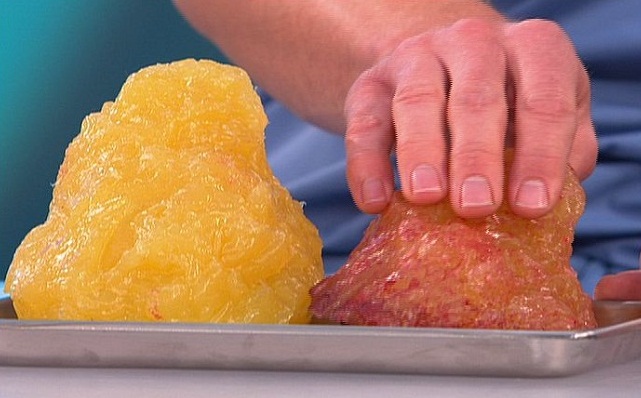UC San Francisco researchers studying beige fat - a calorie-burning tissue that can help to ward off obesity and diabetes - have discovered a new strategy to cultivate this beneficial blubber.
Beige fat cells have the ability to switch back and forth between an energy-hoarding "white" state and an energy-burning "brown" state, the new research found, based on how they handle the cellular power plants known as mitochondria: Preventing beige fat cells from digesting their own mitochondria traps them in the energy-burning state. In mice, this intervention successfully protected against obesity and pre-diabetic symptoms, raising hopes for future applications in human patients.
The results - which appear in the journal Cell Metabolism - represent a key new advance in efforts to use beige fat to battle the growing worldwide epidemics of obesity and type 2 diabetes, according to senior investigator Shingo Kajimura, PhD, an associate professor of cell and tissue biology in UCSF's School of Dentistry.

Research may aid efforts to enhance and maintain energy-burning fat in humans
All mammals, including humans, have two types of fat with completely opposite functions: white, which stores energy and is linked with diabetes and obesity; and brown, which produces heat by burning energy and is associated with leanness.
Human babies are born with brown fat as a natural defense against cold, but it wasn't until 2009 that researchers first discovered that adult humans have energy-burning fat as well. In 2015, Kajimura's group demonstrated that most of this healthy fat in humans is not so-called classical brown fat of the type that babies are born with, but a completely different type of cell, which the researchers dubbed "beige fat." Beige fat is found within white fat and has the ability to quickly convert from an energy-storing state to an energy-burning state in response to environmental changes, such as cold or other stressors.
Many obesity researchers hope to harness the energy-burning capacity of beige and brown fat to help patients lose weight: just two ounces of the stuff can burn up to 200 calories a day when the temperature drops. But just exposing patients to cold temperatures - or giving them drugs that trick the body into thinking it's cold - have proven ineffective in early trials because most people who are obese lack a significant amount of active brown fat. These approaches also have dangerous cardiovascular side effects, which are of particular concern in obese patients.
Kajimura's group recently identified new pharmacological strategies for transforming white fat into beige fat in mice, which showed significant health benefits without cardiovascular side effects. However, the researchers soon realized that when these drug treatments are stopped, the new beige fat just reverts to white fat again within weeks.
"For many years our focus has been on learning to convert white fat into beige fat," said Kajimura, who holds joint appointments in UCSF's Diabetes Center and at the Eli and Edythe Broad Center of Regeneration Medicine and Stem Cell Research. "Now we're realizing we also have to think about how to keep it there for longer time."








